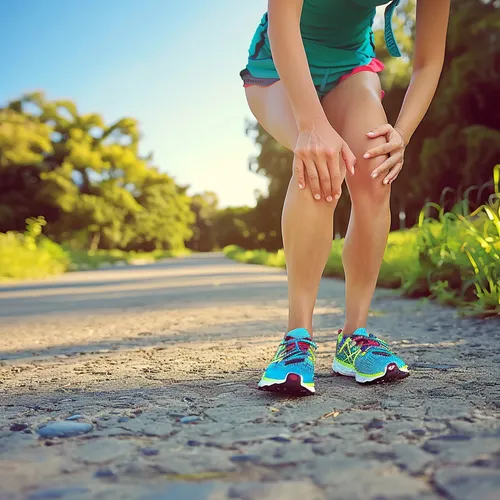You train hard, pushing your body to its limits. But all that pounding on the pavement can take a serious toll, especially on your knees. If you’ve ever experienced sharp pain around or behind your kneecap, you might be dealing with runner’s knee.
Let’s dive into what causes this pesky condition and how to get back on track.
What Exactly is Runner’s Knee?
Despite the name, runner’s knee (also called patellofemoral pain syndrome or anterior knee pain) doesn’t just affect runners. It can strike anyone who repeatedly bends their knees, like cyclists, hockey players, or even avid stair-climbers.
The root cause? Your kneecap (patella) isn’t gliding smoothly over the femur (thigh bone). Instead, it’s tracking off to the side, causing irritation and inflammation in and around the knee joint.
Running Down the Culprits
Several factors can contribute to your kneecap going rogue:
Injury or Surgery
Any damage to the structures that stabilize your kneecap can throw it out of alignment.
Overuse
Repetitive stress from activities like running, squatting, or climbing can irritate the nerves and tendons around your kneecap over time.
Alignment Issues
If your hips, knees, or feet aren’t perfectly lined up, it can force your kneecap to slide abnormally in its groove. Other culprits? Weak thigh muscles, flat feet, or overpronation (when your feet roll inward).
Bad Shoes
Wearing worn-out sneakers that lack proper support can allow your feet to roll excessively, straining your knees.
Getting Back on Your Feet
The good news? Most cases of runner’s knee respond well to some basic self-care:
- R.I.C.E. Rest, ice, compression, and elevation can help reduce swelling and pain.
- Pain Relievers. Over-the-counter anti-inflammatories like ibuprofen can ease discomfort.
- Supportive Gear. Knee braces or straps add stability while your knee recovers.
If the pain persists, consider seeing a physical therapist. They can recommend specific stretches and exercises to improve your knee alignment and strengthen weak muscles.
For example, clamshell leg raises target those oft-neglected hip muscles and can help keep your kneecap tracking properly.
You may also need special orthotics or arch supports if your foot mechanics are out of whack. And in severe cases, surgery can realign your kneecap if nothing else works.
Don’t Give Up!
Sure, runner’s knee is frustrating. But with some TLC and targeted rehab, most cases resolve within several months. Stay dedicated and fired up, and you’ll be back in beast mode soon enough!
Just listen to your body, take breaks when needed, and consider mixing in low-impact cross-training like swimming or cycling. Your knees will thank you.
Because at the end of the day, the last thing you want is this nagging nuisance keeping you sidelined for years on end. A few smart adjustments now can add tons of healthy miles down the road.
So don’t let runner’s knee get you down! With some patience and persistence, you’ll be crushing your goals in no time.
Photo “Runner’s Knee” by Anthony Cunningham for Zoom Health
Zoom Health is a leading UK supplier of Home Health Tests and Earplugs





